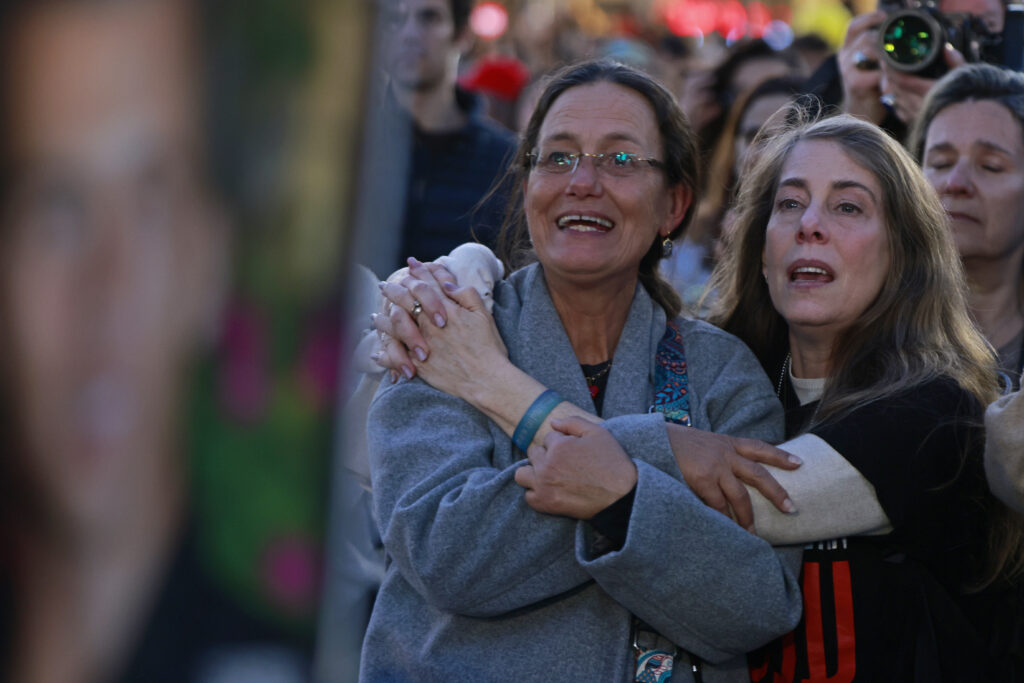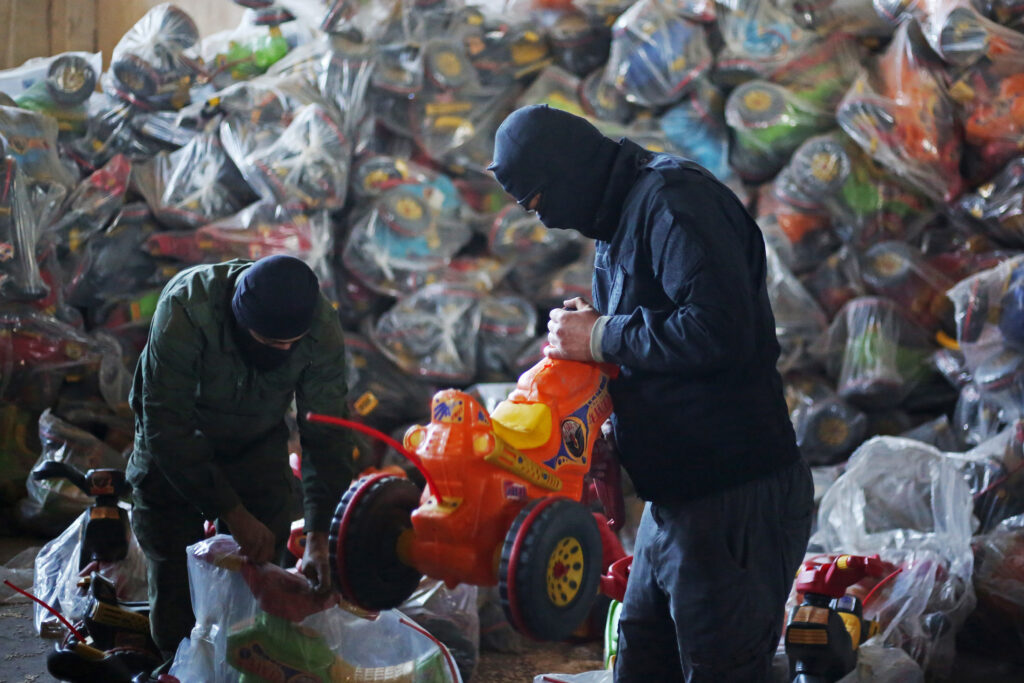Columns of people hundreds strong were making their way home in northern Gaza on Sunday, flanked on both sides by countless buildings turned to rubble, as a ceasefire took effect in the Palestinian territory.In places, they crossed an ashen landscape, heaped with pulverised concrete and studded with the skeletons of ruined buildings.They walked towards the northern city of Jabalia in a haze of dust raised by the movement of hundreds of feet and vehicles over sandy soil on roads stripped of their paving.In parts where the pavement remained, it was covered by layers of dust and debris.”We came here at six in the morning to find massive, unprecedented destruction,” said Walid Abu Jiab, a displaced Gazan who returned to his home in Jabalia.”There is nothing left in the north worth living for,” he told AFP.On either side of the road, former apartment buildings lay collapsed after months of Israeli shelling and air strikes during a military operation focused intently on the north of the Palestinian territory.The Israeli military began an intensive campaign in northern Gaza including Jabalia in early October 2023, saying it aimed to keep Hamas fighters from regrouping there after another operation in the south.After initially surrounding Jabalia, the military urged civilians across northern areas to evacuate. Those who stayed endured some of the war’s most devastating airstrikes and a stringent aid blockade in Gaza.Rana Mohsen, who was displaced from Jabalia to Gaza city, said she didn’t wait for the official start of the ceasefire.”We’ve been waiting for this moment for 16 months,” said the 43-year-old mother of three.”My joy is indescribable. We are finally in our home. There is no home left, just rubble, but it’s our home. We are lucky because part of the roof is still intact”, she told AFP.”The extent of the destruction is unimaginable. Buildings and landmarks have completely disappeared, as if it were a ghost town or abandoned cities.”- ‘I’m going to Rafah’ -Despite the damage, Sunday gave way to scenes of joy and jubilation, despite the ceasefire being delayed by several hours.In the southern city of Khan Yunis, crowds gathered in the streets and cheered as armed men paraded in pick-ups, Kalashnikov assault rifles held aloft, firing into the air in celebration.Hundreds of people gathered at a junction playing drums, waving Palestinian flags and chanting.”This joy is more beautiful than the joy of Eid, and this is the most beautiful pleasure,” a man told AFP from the window of his car, which was packed with his family and all his belongings. “I’m going to Rafah,” he added excitedly, even as his car was forced to a complete stop by the mass of celebrating Palestinians.In Rafah, Gaza’s southernmost city, people began returning in droves before the ceasefire even went into effect, with Israel having delayed the implementation by nearly three hours, saying it had not received a list of hostages to be released by Hamas.Ahmad al-Balawi, a resident of Rafah, returned as soon as he could.”As soon as I returned to the city, I felt a shock”, he told AFP, describing “Decomposing bodies, rubble, and destruction everywhere.””Entire areas have been completely wiped out”, he said.The war in Gaza was sparked by the militant group’s surprise October 7, 2023 attack on Israel, which resulted in the deaths of 1,210 people, most of them civilians, according to an AFP tally of Israeli official figures.Israel’s retaliatory campaign has killed at least 46,913 people, also mostly civilians, according to figures from the Hamas-run territory’s health ministry that the United Nations considers reliable.- ‘We will rebuild’ -“The residents have returned to the city of Rafah, even though it is no longer a city. Thousands of citizens are on their way back,” said Muhammad al-Shaer, a displaced resident.Taking all their remaining belongings with them, residents moved by truck, donkey-drawn cart, bicycle and on foot towards Rafah, carrying everything from large water tanks to mattresses.In the central city of Nuseirat, jubilant children thronged the streets, and members of Hamas’s security forces patrolled armed and in uniform shortly before the ceasefire came into effect.In Gaza City, a convoy of bulldozers set to clearing the streets of rubble and rubbish accumulated during the last 15 months, in which public services were halted by the war. In the distance, celebratory gunshots echoed.Gaza City municipality spokesman Asem Alnabih said on X that the city would facilitate the return of its residents.”We are starting today to reopen the main roads in Gaza City, preparing for the return of our displaced citizens”, he wrote.Walid Abu Jalboa from Jabalia said he had begun to think of the future.”God willing, with our will, faith in God, and strength, we will rebuild and live.”





